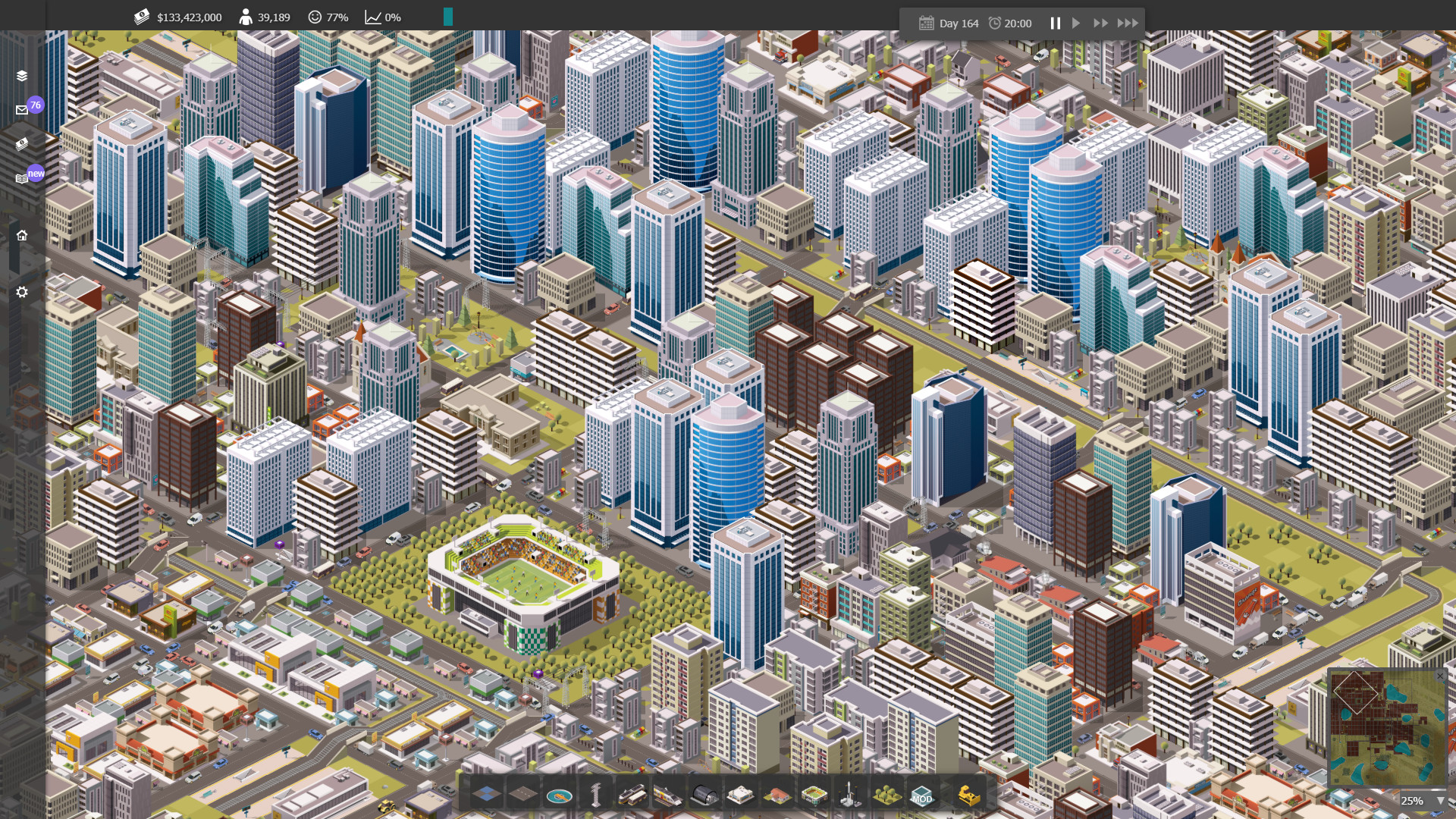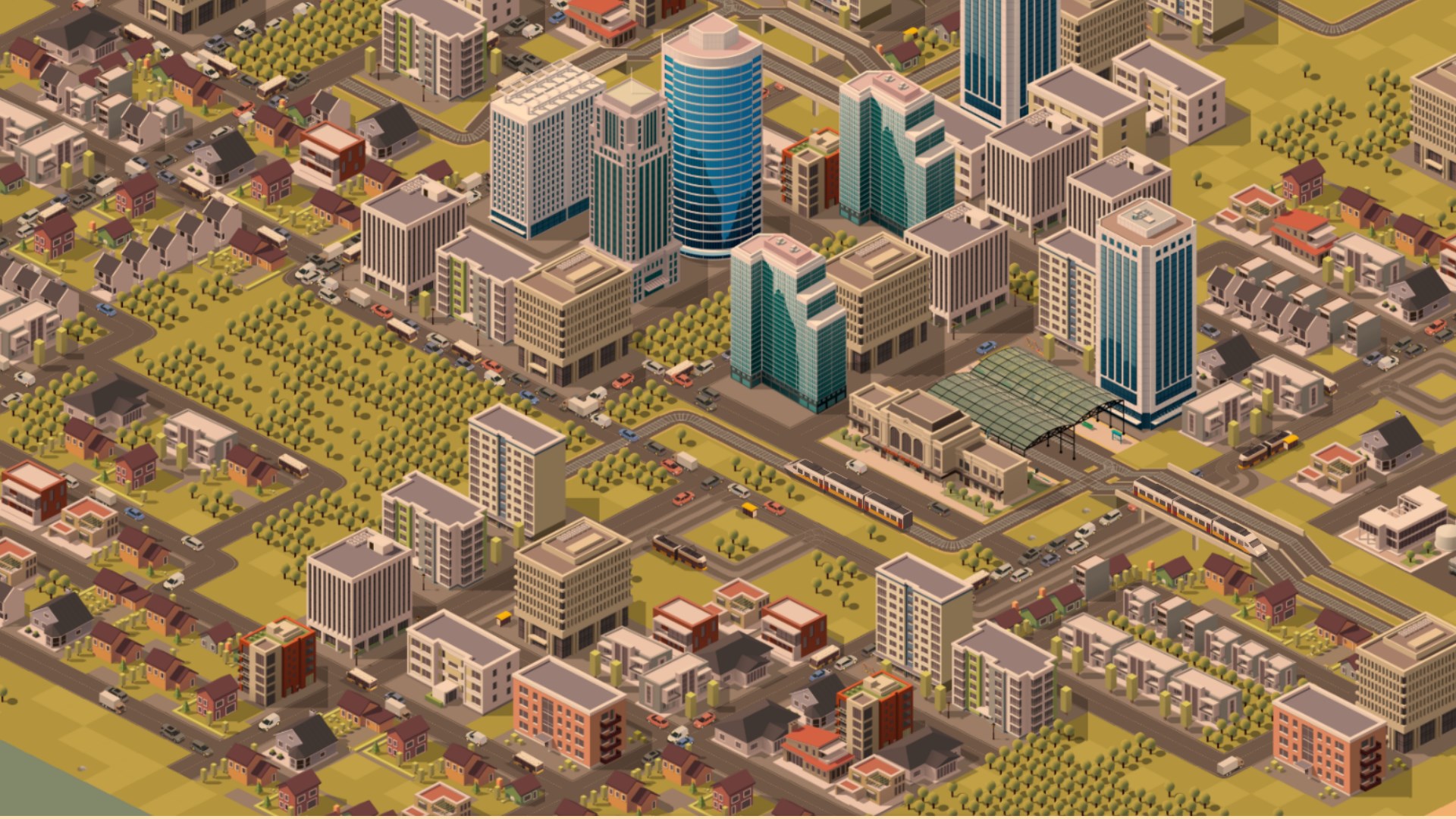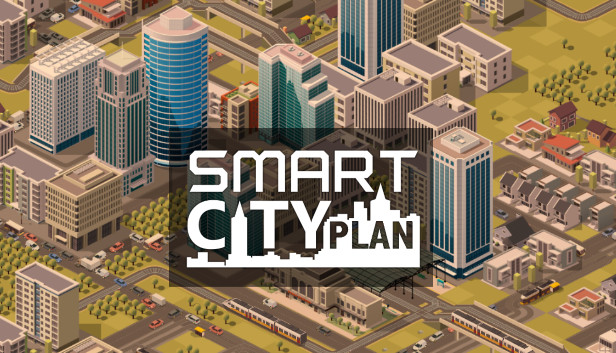Smart City Plan Activated Free Download Latest[2023]
Steamunlocked:- A landscape of urbanization, cities are becoming smarter and more interconnected than ever before. The concept of a Smart City Plan has gained significant traction in recent years, as cities worldwide embrace innovative technologies and data-driven solutions to enhance the quality of life for their residents. This article explores the essence of a Smart City plan and its potential to revolutionize urban living.
satna smart city plan can be defined as an urban area that employs advanced technologies, data analytics, and intelligent infrastructure to optimize resource management, improve efficiency, and elevate the overall well-being of its citizens. It involves leveraging the power of the Internet of Things (IoT), artificial intelligence (AI), and big data to address various challenges faced by urban communities.

The concept of a Ghaziabad smart city plan represents a promising future for urban living, where technology and data converge to create more livable, sustainable, and connected communities. With careful planning and implementation, cities can leverage smart technologies to address urban challenges, enhance citizen engagement, and unlock the full potential of their resources. As more cities embark on their Smart City journeys, the vision of a smarter, more inclusive future becomes closer to reality.
A planner smart city plan encompasses a comprehensive strategy and roadmap for leveraging advanced technologies and data-driven solutions to transform urban areas into more efficient, sustainable, and livable spaces. It involves the integration of various elements such as intelligent infrastructure, digital connectivity, sustainable energy management, efficient mobility, and citizen engagement. This overview provides a high-level understanding of the key components and benefits associated with a Smart City plan.
Muzaffarpur’s smart city plan represents a strategic approach to leverage technology and data to transform urban areas into more sustainable, efficient, and livable communities. By integrating intelligent infrastructure, digital connectivity, sustainable energy management, efficient mobility, and citizen engagement, Smart Cities aim to address urban challenges and unlock the full potential of their resources. The implementation of a Smart City plan offers numerous benefits, including improved quality of life, economic growth, and environmental sustainability. As cities embrace these initiatives, they pave the way for a smarter and more inclusive future.
Key Features of Smart City Plan:
A Smart City plan comprises a range of features and initiatives that aim to transform urban areas into technologically advanced, sustainable, and citizen-centric communities. These features leverage innovative technologies and data-driven solutions to address urban challenges and enhance the quality of life for residents. Here are some key features commonly found in Smart City plans:
- Intelligent Infrastructure: Smart City plans to prioritize the development of intelligent infrastructure that utilizes advanced technologies and connectivity. This includes the deployment of sensors, IoT devices, and communication networks throughout the city to collect and analyze real-time data. Intelligent infrastructure enables efficient resource management, improved service delivery, and better decision-making processes.
- Digital Connectivity: A strong digital connectivity framework is a fundamental feature of Smart City plans. It involves providing high-speed internet access, establishing Wi-Fi hotspots, and deploying 5G networks throughout the city. This ensures seamless communication and connectivity between devices, systems, and citizens, enabling the exchange of data and information in real-time.
- Sustainable Energy Management: Smart City plans to emphasize sustainable energy solutions to reduce environmental impact and promote clean energy generation. This feature includes integrating renewable energy sources such as solar and wind power, implementing energy-efficient technologies in buildings, and developing smart grids that optimize energy distribution and consumption. Sustainable energy management contributes to a greener and more sustainable urban environment.
- Efficient Mobility: Efficient mobility is a key feature of Smart City plans. These initiatives focus on transforming transportation systems by promoting sustainable modes of transport, enhancing public transportation services, and implementing intelligent transportation systems. This includes the use of electric vehicles, smart traffic management solutions, and the development of pedestrian and cycling-friendly infrastructure to reduce congestion and improve overall mobility.
- Data-Driven Decision-Making: Smart City plans to leverage data analytics and insights to support informed decision-making processes. By collecting and analyzing data from various sources, including sensors, IoT devices, and citizen feedback, city authorities can gain valuable insights into urban trends, resource utilization, and citizen preferences. Data-driven decision-making enables efficient allocation of resources, targeted service delivery, and evidence-based policy formulation.
- Citizen Engagement and Participation: Smart City plans emphasize citizen engagement and participation as a crucial feature. This includes providing platforms for residents to access public services digitally, participate in decision-making processes, and provide feedback on urban issues. Through open data initiatives, digital platforms, and community involvement, citizens become active stakeholders in shaping the development and improvement of their cities.
- Smart Governance and Public Services: Smart City plans often involve the digitalization of government services and administrative processes. This feature includes the implementation of e-governance systems, digital platforms for accessing public services, and automation of administrative tasks. Smart governance enhances the efficiency and transparency of public services, streamlines administrative procedures, and improves the overall delivery of services to citizens.
- Environmental Sustainability: Environmental sustainability is a prominent feature of Smart City plans. These initiatives focus on reducing carbon emissions, conserving resources, and promoting sustainable practices. This includes implementing waste management systems, promoting green building practices, enhancing green spaces, and adopting environmentally friendly practices in various sectors. Environmental sustainability ensures a healthier and more resilient urban environment.

System Requirements for Smart City Plan:
-
Hardware Requirements:
- Centralized server infrastructure capable of handling a large volume of data and processing power to support real-time analytics and decision-making.
- Network infrastructure with high bandwidth and low latency ensures seamless communication between various devices and systems within the smart city.
- Internet of Things (IoT) devices such as sensors, actuators, cameras, and smart meters are distributed throughout the city to collect data and enable automation.
- Data storage systems are capable of handling and analyzing large amounts of structured and unstructured data generated by various sources in the city.
- Advanced communication systems to support smart grids, intelligent transportation systems, and other interconnected services.
-
Software Requirements:
- Data management and analytics software for processing and analyzing the collected data to derive meaningful insights and enable data-driven decision-making.
- Artificial intelligence and machine learning algorithms for predictive analytics, anomaly detection, and optimization of city operations.
- Integration platforms and middleware to connect different systems and devices, enabling seamless communication and interoperability.
- Geographical Information System (GIS) software for spatial analysis, mapping, and visualization of data to support urban planning and resource allocation.
- Security software and protocols to ensure the protection of data, privacy, and the overall cybersecurity of the smart city infrastructure.
- User interfaces and dashboards for citizens, city officials, and administrators to access and interact with smart city services and applications.
-
Data Requirements:
- Real-time and historical data from various sources such as sensors, cameras, social media, and government databases.
- Environmental data including air quality, noise levels, weather conditions, and waste management.
- Energy consumption data from smart grids, buildings, and transportation systems.
- Traffic data including vehicle movements, congestion levels, and parking availability.
- Public transportation data such as bus and train schedules, routes, and passenger information.
- Demographic data includes population, age groups, income levels, and social patterns.
- Emergency response data including police, fire, and medical services.
-
Security and Privacy Requirements:
- Robust encryption and authentication mechanisms to secure data transmission and storage.
- Privacy protection measures to ensure the anonymity and confidentiality of personal data.
- Regular security audits and vulnerability assessments to identify and mitigate potential risks.
- Compliance with relevant data protection regulations and standards.
- Incident response plans and disaster recovery strategies to address potential security breaches or system failures.
-
Governance and Policy Requirements:
- Clear governance structure and policies to define roles, responsibilities, and decision-making processes for managing the smart city initiatives.
- Collaboration and coordination mechanisms between various stakeholders including government agencies, private sector partners, and citizens.
- Legal and regulatory frameworks to address privacy, data ownership, and ethical considerations related to smart city technologies.
- Public engagement strategies involve citizens in the decision-making process, ensure transparency, and address concerns or feedback.
How To Install?
- Define the Scope: Clearly define the scope and objectives of your Smart City Plan. Identify the specific areas or aspects of the city that will be covered, such as transportation, energy management, waste management, or public safety.
- Assess Requirements: Evaluate the hardware, software, data, security, and governance requirements for your Smart City Plan. Determine the necessary resources and infrastructure to support the plan effectively.
- Plan the Architecture: Design the architecture and infrastructure of your Smart City Plan. Determine the placement of sensors, IoT devices, communication networks, data centers, and other components. Consider scalability, interoperability, and integration with existing systems.
- Procure Hardware and Software: Based on the requirements and architecture, procure the necessary hardware and software components. This may involve purchasing servers, networking equipment, IoT devices, data storage systems, analytics software, and other relevant technologies.
- Install Hardware: Install and configure the hardware components according to the plan. This may include setting up servers, establishing network connectivity, deploying sensors and IoT devices in strategic locations throughout the city, and integrating them into the overall infrastructure.
- Deploy Software: Install and configure the software components required for your Smart City Plan. This may involve setting up data management and analytics platforms, integration middleware, security software, and user interfaces for citizens and administrators.
- Establish Data Connectivity: Ensure reliable data connectivity across the city to enable real-time data collection, transmission, and analysis. Set up a network infrastructure with sufficient bandwidth, low latency, and adequate coverage.
- Integrate Systems: Establish seamless integration between different systems and devices within the smart city infrastructure. This includes connecting sensors, IoT devices, databases, analytics platforms, and user interfaces to enable data sharing and interoperability.
- Implement Security Measures: Implement robust security measures to protect the smart city infrastructure and data. This includes setting up firewalls, encryption mechanisms, access controls, and intrusion detection systems. Regularly update and patch software to address security vulnerabilities.
- Test and Validate: Conduct thorough testing and validation of the Smart City Plan before full deployment. Test the functionality, performance, and reliability of the system. Ensure that data collection, analytics, and decision-making processes are working as expected.
- Train Personnel: Provide training to relevant personnel who will be involved in operating and managing the Smart City Plan. Ensure that they have the necessary skills and knowledge to effectively utilize the system.
- Monitor and Maintain: Establish a monitoring and maintenance plan to continuously monitor the performance of the Smart City Plan, address any issues or glitches promptly, and carry out regular maintenance activities to ensure optimal functioning.
Conclusion:
Steam Unlocked:- a Smart City Plan represents a visionary approach to urban development that leverages advanced technologies, data analytics, and interconnected systems to create more efficient, sustainable, and livable cities. By integrating various components such as IoT devices, data management platforms, and intelligent infrastructure, a Smart City Plan aims to enhance the quality of life for citizens, optimize resource utilization, improve service delivery, and foster economic growth. With a strong emphasis on data-driven decision-making, citizen engagement, and effective governance, Smart City Plans have the potential to transform cities into thriving, interconnected ecosystems that address the complex challenges of the modern urban landscape. As cities continue to evolve, embracing the principles and implementation of Smart City Plans can pave the way for a brighter and more sustainable future for urban communities worldwide.
